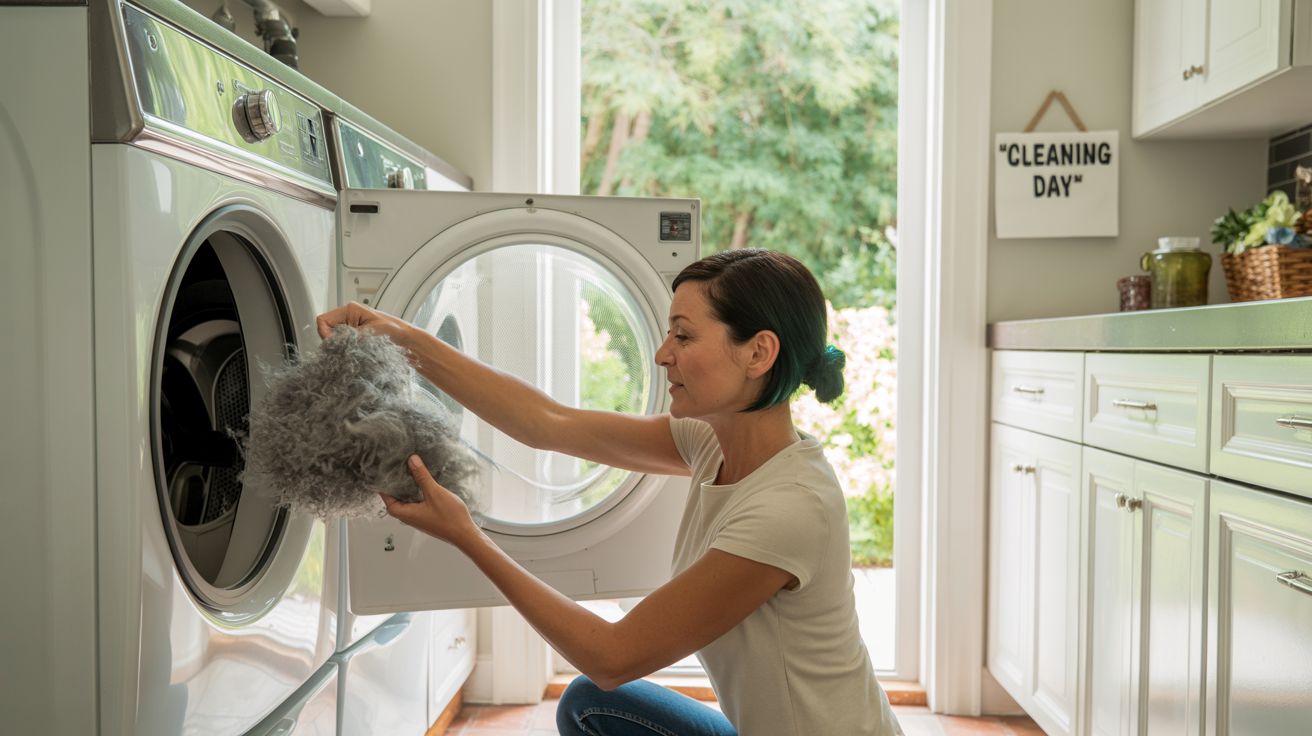If you live in Ann Arbor and do laundry often, you’ve probably pulled out your dryer lint trap and wondered, “Is it really that important to clean this little thing?” The answer is a loud yes! Cleaning the lint trap might seem simple, but doing it the right way — and safely — is key to keeping your home safe and your dryer running smoothly. Whether you’re doing laundry for a big family or just tossing in your weekend wear, a clogged lint trap can be a real fire hazard. In this guide, we’ll break down the best safety precautions to follow while cleaning your dryer lint trap, so you’re not just staying clean, but staying safe too. For anyone looking to keep things running smoothly, cleaning dryer lint trap is a small task with big benefits — and that’s where Ann Arbor Dryer Vent Cleaning comes in if you need a hand.
1. Power Down Before You Get Started
It might be tempting to just pull out the lint screen for a quick wipe while the dryer is still running, but resist that urge. Always make sure the dryer is completely off—or better yet, unplugged—before you do any cleaning. This isn’t just about dodging an electric shock. When you’re reaching in near moving parts, even a little accidental jolt or leftover motion could cause harm. Taking a moment to power down protects both you and your machine.
Tip: Develop a routine—just as you wouldn’t scrub an oven while it’s hot, never clean your dryer while it’s in operation.
2. Give Your Dryer Time to Cool Down
After a cycle, your dryer’s internals are much hotter than you might expect. Before you grab the lint screen or touch metal surfaces, wait 10 to 15 minutes for things to cool off. Hot lint screens and vent areas can cause minor burns or give you an uncomfortable surprise.
Bonus: Lint comes off more easily when it’s cooled and settled, so you’ll get a cleaner result with less effort.
3. Stick to Simple Tools—No Need for Gadgets
You don’t need anything fancy or sharp to keep your lint trap clean. In fact, avoid using metal tools since they can damage the delicate mesh. Rely on a soft brush, your hands, or the hose attachment of a vacuum for a deeper clean. For stubborn lint, a little warm water and mild dish soap will loosen things up without harm.
| Recommended Tool | Why It’s Great |
|---|---|
| Soft-bristled brush | Gently removes lint without damaging the screen |
| Vacuum with hose | Reaches deeper into the vent area |
| Dish soap + warm water | Dissolves oily lint buildup safely |
| Old toothbrush | Perfect for cleaning tricky corners |
| Microfiber cloth | Wipes down lint trap housing efficiently |
4. Don’t Forget the Hard-to-Reach Areas
Many people just clean the lint screen and call it done, but the slot where the screen fits can collect a surprising amount of lint. This is exactly where lint buildup can pose a real fire hazard. At least once a week, use a flexible brush or vacuum hose to gently clean inside the lint trap housing. If you spot a lot of fluff, or your dryer’s taking longer than usual, it’s time for a deeper clean—or to contact a professional.
“Every year, thousands of dryer fires are traced back to lint buildup. Keeping your lint trap clear isn’t just good practice—it’s a critical safety step.”
— James R., Vent Technician at Ann Arbor Dryer Vent Cleaning
5. Keep Water Away from Electrical Components
Rinsing the lint screen with soapy water now and then is fine, but be careful not to let moisture drip into the slot or touch any controls. Always dry the screen thoroughly before sliding it back in. Water and electrical parts are a risky mix—and a damp lint screen can actually trap more lint when you run your next load.
FAQs: Dryer Lint Trap Safety Questions
Q: How often should my lint trap be cleaned?
A: After every load. Even a thin layer of lint can reduce drying efficiency and increase fire risk.
Q: Is it okay to use compressed air to clean the lint trap?
A: Not unless you’re confident using it—it can push lint deeper into the vent, making things worse.
Q: Should I get my dryer vent cleaned professionally?
A: Absolutely—at least once a year. Lint can travel far beyond the screen into the vent ductwork, where it’s harder to reach.
Q: What are signs my lint trap isn’t working right?
A: If your clothes are taking longer to dry, your dryer feels hotter than usual, or you notice musty smells, check your lint trap and vent immediately.
Conclusion
Taking a few extra minutes to care for your dryer lint trap can make a world of difference in your home’s safety and your appliance’s performance. Just by letting your dryer cool, using gentle tools, and checking less obvious spots, you can help prevent hazards and extend your dryer’s life. And if you ever need a closer inspection or a full vent cleaning, the Ann Arbor Dryer Vent Cleaning team is ready to help with expert service and a friendly touch. Remember: simple habits like cleaning your dryer lint trap are powerful ways to keep your household running safely and smoothly.
Read More : Ann Arbor Dryer Vent Cleaning



